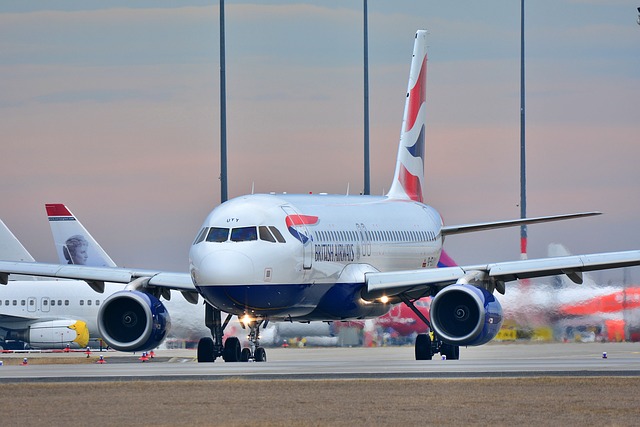A Comprehensive Guide to Aviation Training Careers: What to Consider and Know
Interest in aviation training continues to rise as more individuals explore career paths within the airline industry. This guide provides insights into how aviation programs are generally structured, the types of roles training may support, and what individuals often consider when evaluating career potential, certification pathways, and skill requirements in this specialized field.

Understanding Pilot Training Programs
Becoming a pilot involves a structured progression through various certification levels. The journey typically begins with a Private Pilot License (PPL), which allows you to fly aircraft for personal purposes. From there, aspiring professional pilots pursue additional ratings and certifications such as an Instrument Rating (IR), Commercial Pilot License (CPL), and potentially an Airline Transport Pilot License (ATPL).
Pilot training programs vary in structure, duration, and approach. Traditional flight schools offer part-time training that might span 1-2 years, while accelerated programs can compress training into 6-9 months of intensive study. University-affiliated pilot training programs combine flight training with academic degrees, typically taking 3-4 years but offering broader education. Many major airlines also operate cadet programs that provide a direct pathway from zero experience to airline employment, though these are highly competitive and often require significant upfront investment.
Aviation Maintenance Certification Options
Aircraft maintenance technicians (AMTs), often called aircraft mechanics, form the backbone of aviation safety. The primary credential for maintenance professionals in the United States is the FAA Airframe and Powerplant (A&P) certification, while other countries have equivalent qualifications like the EASA Part-66 license in Europe.
Obtaining an aviation maintenance certification typically requires completing an FAA-approved program at a technical school, which generally takes 18-24 months. Alternatively, candidates can qualify through documented work experience under the supervision of certified mechanics. The certification process includes written, oral, and practical examinations covering subjects like electrical systems, hydraulics, turbine engines, airframe structures, and aviation regulations. Many maintenance professionals also pursue specialized certifications for specific aircraft types or advanced systems, which can significantly enhance career opportunities and compensation.
Flight School Costs Breakdown
Flight training represents a significant investment, with costs varying widely based on location, training approach, and aircraft type. Understanding the financial commitment is essential for planning your aviation career pathway.
Private Pilot License training typically costs between $8,000-$15,000, covering approximately 60-75 hours of flight time, ground school, study materials, and examination fees. Commercial Pilot License training adds another $20,000-$35,000 to the total. For those pursuing a full professional pilot track including instrument rating, multi-engine rating, and flight instructor credentials, the total investment often reaches $60,000-$100,000.
Integrated Airline Transport Pilot programs, which take students from zero experience to commercial multi-engine qualifications in a structured environment, typically cost $70,000-$120,000. University aviation degree programs that include flight training can cost $100,000-$200,000 but include a bachelor’s degree along with flight qualifications.
| Training Path | Typical Duration | Approximate Cost Range |
|---|---|---|
| Part 141 Flight School (Zero to Commercial) | 9-18 months | $60,000-$85,000 |
| Part 61 Flight School (Zero to Commercial) | 12-24 months | $50,000-$70,000 |
| University Aviation Degree with Flight | 3-4 years | $100,000-$200,000 |
| ATP Flight School Airline Career Program | 7 months | $85,000-$95,000 |
| Aviation Maintenance Technician School | 18-24 months | $20,000-$50,000 |
Prices, rates, or cost estimates mentioned in this article are based on the latest available information but may change over time. Independent research is advised before making financial decisions.
Commercial Pilot Salaries and Career Progression
A career as a commercial pilot typically follows a progression of increasing responsibility, aircraft size, and compensation. Most pilots begin their careers building hours as flight instructors, charter pilots, or flying for smaller regional carriers before advancing to major airlines or corporate aviation.
First-year regional airline pilots in the United States typically earn between $40,000-$60,000 annually. After gaining experience and advancing to captain at a regional airline, salaries generally range from $70,000-$100,000. Major airline pilots earn significantly more, with first officers (co-pilots) at large carriers earning $80,000-$150,000 and captains earning $150,000-$300,000+ annually, depending on aircraft type, seniority, and airline.
Career progression is largely based on accumulated flight hours and experience. New commercial pilots typically have 250-300 hours when licensed, regional airlines hire at around 1,000-1,500 hours, and major airlines generally require 3,000+ hours. Most pilots reach major airlines after 3-7 years of building experience at regional carriers or in other flying roles.
Choosing the Right Aviation Training Path
Selecting the appropriate training program requires careful consideration of multiple factors including your career goals, financial resources, timeline, and personal circumstances. While university aviation programs offer academic credentials alongside flight training, accelerated flight schools may provide faster entry into the industry.
For maintenance career paths, consider whether you prefer working with large transport category aircraft (which might suggest training near major airline maintenance bases) or smaller general aviation aircraft. Some schools specialize in specific technologies or have stronger relationships with particular employers.
Research the placement rates and industry connections of potential training providers. Schools with strong industry partnerships often provide clearer pathways to employment. Additionally, consider location carefully – training in areas with favorable weather conditions can reduce weather-related training delays, potentially saving time and money.
The aviation industry experiences cyclical hiring patterns, influenced by economic conditions, retirement waves, and global events. Training programs that offer flexibility to pause or adjust training intensity can provide valuable options during industry downturns. Most importantly, visit multiple training providers, speak with current students and recent graduates, and carefully evaluate the culture and approach of each program to find the best personal fit for your learning style and career objectives.




